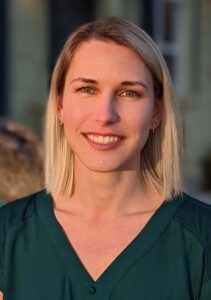Working Together to Apply Knowledge
CEL involves students, faculty and community partners working together to apply knowledge in authentic settings in order to address community needs while also meeting instructional objectives. CEL enhances and deepens students' understanding of an academic discipline by facilitating the integration of theory and practice. This high impact teaching method provides students with experiences that develop life skills, with opportunities to engage in critical reflection, and with the intellectual space to understand and contribute to the public purpose of their chosen major or discipline.
Past Participants
Rachel Gordon, CEL Program Biochemistry Spring 2019
“Biochemistry is one of those topics that you sometimes think, “When will I ever need to use this?” This CEL program eliminates this question and turns biochemistry into something that is applicable to the real world. It gives you the backbone to educate patients. This experience gave me a taste of what patient education consists of and I was able to combine my knowledge from this class into something that is beneficial to my community.”
Student Group, Conservation Biology, Spring 2019
“Our CEL work with Hawkwatch International may seem small but has a profound impact on this particular species, the community of Utah, as well as on our own education. Many of us agreed that this work with CEL partners has changed our outlook on the education we received and our future in our biology careers. This CEL work also allowed for us to make meaningful connections with the biology community here in SLC. This connection does not happen in a typical university class and has unwavering value in the development of conservation biologists hoping to make a difference in this world.”
Adam Brown Wildlife Ecology & Conservation Fall 2014
I think that the Community Engaged Learning program is an essential component to applied science. It was very rewarding for me; it gave me the opportunity to get my foot in the door with the US Forest Service, local office. I was able to meet the right people to help me understand the departments within the forest service. This connection relates directly to wildlife biology in every way. If I can get in part time next summer, then it could possibly lead to an internship opportunity or technical assistant job to a plant or wildlife biologist, and hopefully lead to a graduate path within the forestry realm!
Classroom Component
The classroom component of the course is combined with the experiential learning component, along with multiple reflection opportunities, to create an enriching, meaningful and applied learning experience for the student. This strategy allows students to apply lecture topics to the professional world, enhances civic responsibility, and strengthens relationships between students and their off-campus community.
Each of these courses allows students to engage in meaningful, applied work with a community partner that enriches the learning experience.
For more details see the class-specific CEL syllabus linked above.
Amanda Hoepfner
Amanda Hoepfner (Associate Instructor/CEL Coordinator)

Amanda is an instructor for the School of Biological Science in addition to being the Community Engaged Learning Coordinator. She mainly teaches and coordinates the second semester of the freshman course, Fundamentals of Biology II (Biol 1620), and teaches the ecology section of Ecology and Evolution (Biol 3410).
Amanda is enthusiastic about community engaged learning and attributes much of her professional direction to the experiences she gained through volunteer work. As a teenager, she volunteered at Utah’s Hogle Zoo as a Zoo Aid. Here she started working with great apes (namely orangutans) and became interested in behavioral ecology and biology.
Amanda started at the University of Utah as an undergraduate herself, and earned her Bachelor’s degree in Biology in 2010. She continued at the U to earn her PhD in Ecology, Evolution and Organismal Biology studying the vocal behavior of wild Bornean orangutans.
Contact Information
Amanda Hoepfner
Associate Instructor/Community Engaged Learning Coordinator
Offices: Bldg. 44 Rm 221
INTERESTED IN STUDYING BIOLOGY?
Apply to a leading research institution, the School of Biological Sciences at the University of Utah.
CONTACT US